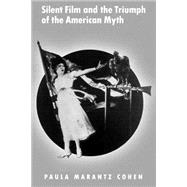Silent Film and the Triumph of the American Myth
, by Cohen, Paula Marantz- ISBN: 9780195140941 | 019514094X
- Cover: Paperback
- Copyright: 5/3/2001
Silent Film and the Triumph of the American Myth connects the rise of film and the rise of America as a cultural center and twentieth-century world power. Silent film, Paula Cohen reveals, allowed America to sever its literary and linguistic ties to Europe and answer the call bynineteenth-century writers like Emerson, Thoreau and Whitman for an original form of expression compatible with American strengths and weaknesses. When film finally began to talk in 1927, the medium had already done its work. It had helped translate representation into a dynamic visual form and had"Americanized" the world. Cohen explores the way film emerged as an American medium through its synthesis of three basic elements: the body, the landscape, and the face. Nineteenth-century American culture had already charged these elements with meaning--the body through vaudeville and burlesque, landscape through landscapepainting and moving panoramas, and the face through portrait photography. Integrating these popular forms, silent film also developed genres that showcased each of its basic elements: the body in comedy, the landscape in the western, and the face in melodrama. At the same time, it helped produce anew idea of character, embodied in the American movie star. Cohen's book offers a fascinating new perspective on American cultural history. It shows how nineteenth-century literature can be said to anticipate twentieth-century film--how Douglas Fairbanks was, in a sense, successor to Walt Whitman. And rather than condemning the culture of celebrity andconsumption that early Hollywood helped inspire, the book highlights the creative and democratic features of the silent-film ethos. Just as notable, Cohen champions the concept of the "American myth" in the wake of recent attempts to discredit it. She maintains that American silent film helpedconsolidate and promote a myth of possibility and self-making that continues to dominate the public imagination and stands behind the best impulses of our contemporary world.







